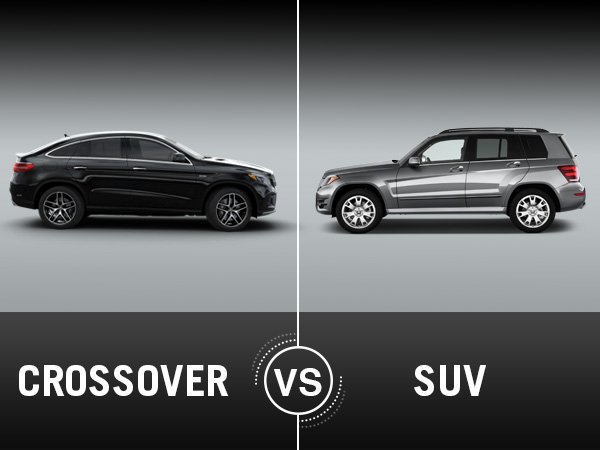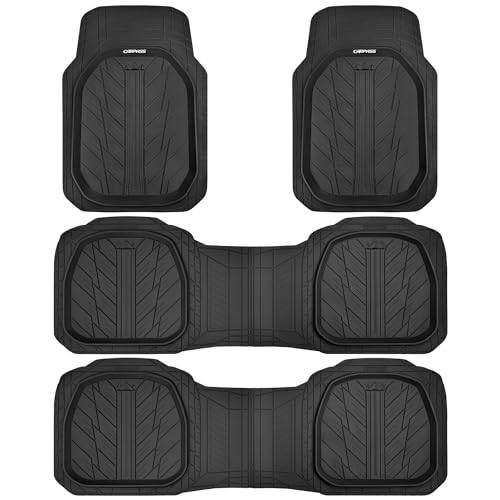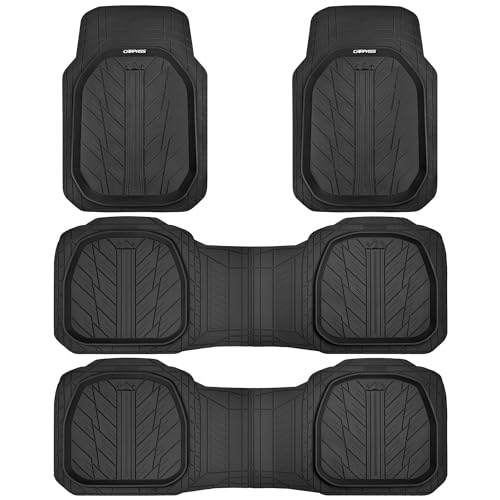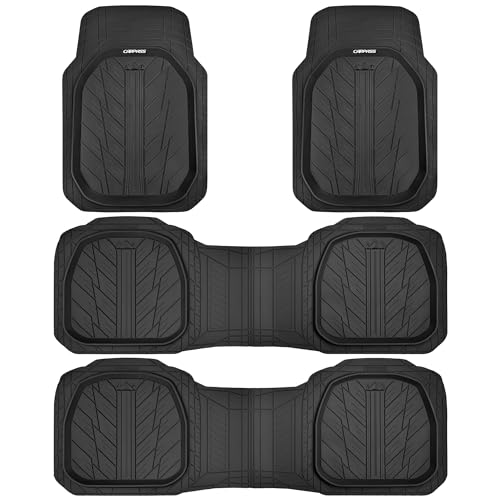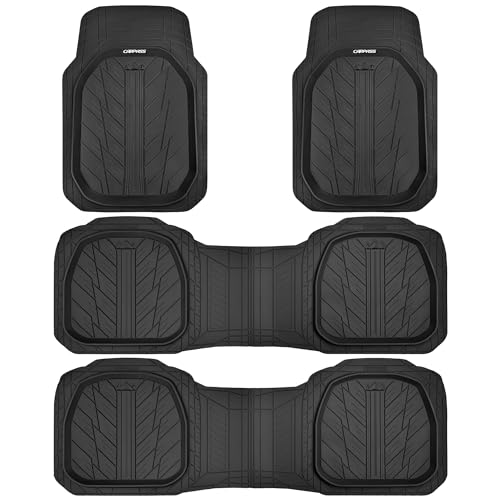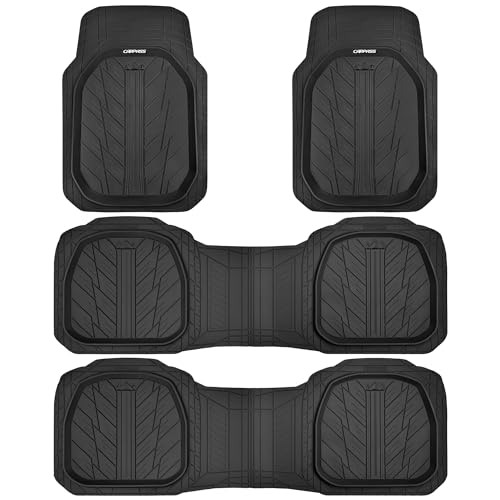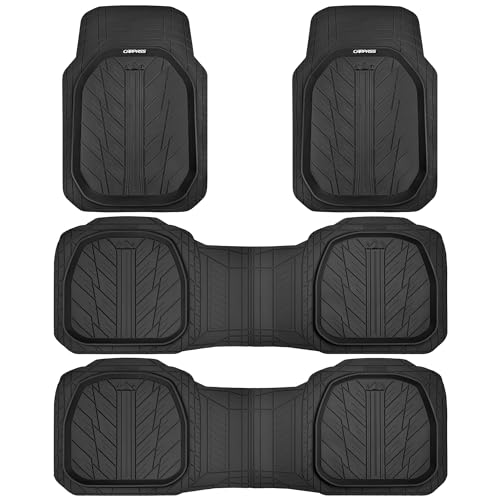When was the last time you considered how different a crossover and an SUV really are? Crossovers often resemble their SUV counterparts but are built on a car’s platform. This construction technique results in a vehicle with more car-like handling and efficiency.
On the other hand, SUVs are typically built on a truck’s platform, contributing to their superior off-road abilities and towing capacity. The history of SUVs dates back to military and utilitarian roots, further bolstered by their robust nature. Interestingly, while crossovers have now surpassed SUVs in sales, both segments continue to evolve, offering more advanced technology and features.
| Feature | Crossover | SUV |
|---|---|---|
| Size | Smaller, more compact | Larger, more spacious |
| Fuel Efficiency | Better, uses less gas | Lower, uses more gas |
| Handling | Smoother, easier to drive | More robust, better for tough roads |
| Towing Capacity | Lower, not ideal for heavy loads | Higher, can tow trailers and boats |
| Off-Road Capability | Limited, best for paved roads | Excellent, suited for rugged terrains |

Overview of Crossovers and SUVs
Crossovers and SUVs are two popular types of vehicles. While they might look similar, they have different designs and uses. Let’s dive into what makes each of them unique.
Overview of Crossovers
Crossovers are built on a car’s platform. This gives them smooth handling and good fuel efficiency. They are perfect for city driving.
Most crossovers offer a more comfortable ride compared to larger vehicles. They are designed to be easy to drive and park in tight spaces. Many families choose crossovers for their daily needs.
Crossovers often come with advanced safety features. These include lane-keeping assist and automatic braking. These features make them safe for everyday use.
The cargo space in crossovers is usually generous. This makes them great for shopping trips or vacations. You can easily fold down the back seats for more room.
Despite their size, crossovers can sometimes handle light off-roading. However, they are not as rugged as SUVs. They are best suited for paved roads.
Overview of SUVs
SUVs are built on a truck’s platform. This construction makes them strong and durable. They are great for off-roading and towing heavy loads.
SUVs usually have a higher ground clearance. This allows them to handle rough terrains easily. They are perfect for adventurous trips into the wild.
The seating capacity in SUVs is often larger. Some models offer seating for up to eight people. This makes them ideal for big families or group trips.
Many SUVs come with powerful engines. This gives them the ability to tow trailers and boats. They offer impressive performance in various driving conditions.
SUVs are also equipped with advanced technology. Features like navigation systems and rearview cameras are common. These technologies enhance the driving experience and add convenience.
Key Features Compared
Crossovers and SUVs have unique features that set them apart. Here, we’ll compare some of the most important aspects to help understand their differences. Let’s take a closer look at five key features.
Size
Crossovers tend to be smaller in size. This makes them easier to drive in tight city streets. Parking is usually a breeze.
SUVs, on the other hand, are larger and bulkier. They often take up more space and can be harder to park. Their size can be intimidating to some drivers.
The smaller size of crossovers can lead to better fuel efficiency. Less weight means less fuel is needed. This is great for daily commutes.
Larger SUVs offer more interior space. This is great for long trips with lots of passengers or cargo. It provides a more spacious and comfortable experience.
Overall, your choice might depend on how much space you need. Smaller families might prefer crossovers. Bigger families or adventurers might lean towards SUVs.
Performance
Crossovers usually have engines similar to cars. This gives them smooth handling and good acceleration. They perform well on highways and city roads.
SUVs often come with more powerful engines. This allows them to tow heavy loads like trailers or boats. They are also better suited for off-road conditions.
The fuel efficiency of crossovers is generally better. Due to their smaller engines, they use less gas. This can save you money on long trips.
SUVs can handle rough terrains better. Their powerful engines and sturdy build make them ideal for rugged landscapes. They can go places crossovers can’t.
In terms of performance, it boils down to what you need. For city driving, a crossover is often sufficient. For towing and off-road adventures, an SUV is better.
Safety
Both crossovers and SUVs come with modern safety features. These include airbags, anti-lock brakes, and stability control. These features help keep you safe on the road.
Crossovers usually have advanced driver-assist systems. These can include lane-keeping assist and automatic emergency braking. These systems work well on city streets.
SUVs also have these safety features but add strength due to their size. They may offer better protection in collisions. Their rugged build adds an extra layer of security.
Crossovers, being lighter, can be less stable in high winds. However, their safety tech helps balance this out. They aim to prevent accidents before they happen.
SUVs, with their larger size, tend to fare better in tough conditions. Their strong frame and height offer added protection. This makes them a safer choice for extreme conditions.
Comfort
Comfort can be a big factor when choosing between a crossover and an SUV. Crossovers usually have a smoother ride. Their car-like build helps absorb road bumps.
SUVs provide a higher driving position. This can make you feel more in control on the road. Many drivers find this added height comforting.
The interior of crossovers is often more cozy and quiet. They are built with city driving in mind, focusing on passenger comfort. This can make long drives more relaxing.
SUVs offer ample legroom and headroom. They are designed for long trips with many people. This makes them a favorite for family vacations.
Crossover seats are generally easy to adjust. This adds to comfort levels during drives. SUVs, with their larger interiors, can come with more luxurious seating options.
Technology
Modern crossovers are packed with high-tech features. These can include touchscreens, Bluetooth connectivity, and navigation systems. These features make driving easier and more fun.
SUVs also offer similar technologies but often take it a step further. Larger touchscreens and advanced sound systems are common. They aim to provide a premium driving experience.
Crossovers might have fewer tech options compared to high-end SUVs. However, they still offer a lot for their size. Many come with smartphone compatibility and built-in Wi-Fi.
SUVs can include off-road assistance technology. This helps in navigating tricky terrains effortlessly. They are designed to cater to adventurous drivers.
Both vehicle types are becoming more tech-savvy each year. Crossovers offer essential tech, while SUVs often provide high-end features. Your choice may depend on what tech features you value most.
Crossovers vs SUVs: Feature Comparison
When choosing between crossovers and SUVs, it’s important to understand their key features. This table highlights the differences in various aspects. Let’s take a closer look at how these two types of vehicles compare.
| Feature | Crossover | SUV |
|---|---|---|
| Size | Smaller, more compact | Larger, more spacious |
| Engine | Car-like, smaller | Truck-like, more powerful |
| Fuel Efficiency | Better, uses less gas | Lower, uses more gas |
| Handling | Smoother, easier to drive | More robust, better for tough roads |
| Towing Capacity | Lower, not ideal for heavy loads | Higher, can tow trailers and boats |
| Off-Road Capability | Limited, best for paved roads | Excellent, suited for rugged terrains |
| Interior Space | Less, better for smaller families | More, suitable for larger families |
| Safety | Advanced driver-assist systems | Rugged build, better protection |
| Comfort | Smoother ride, cushier | Higher driving position, roomy |
| Technology | High-tech, essential features | Advanced, premium features |
The Good and The Bad
When choosing between crossovers and SUVs, it’s essential to weigh the positives and negatives. Here’s a table that clearly outlines their pros and cons.
| Pros | Cons |
|---|---|
| Better fuel efficiency (Crossover) | Lower towing capacity (Crossover) |
| More interior space (SUV) | Uses more gas (SUV) |
| Smoother ride (Crossover) | Less suited for off-roading (Crossover) |
| Better off-road capability (SUV) | Harder to park (SUV) |
| Advanced safety features (Both) | Higher cost (SUV) |
Price Comparison
Understanding the costs of crossovers and SUVs can help in making a smart purchase decision. Here’s a table showing the price differences between these two types of vehicles.
| Crossover | SUV |
|---|---|
| $25,000 – $35,000 (base models) | $35,000 – $50,000 (base models) |
| $35,000 – $45,000 (mid-range) | $50,000 – $70,000 (mid-range) |
| $45,000 – $60,000 (high-end) | $70,000 – $90,000 (high-end) |
| Lower maintenance costs | Higher maintenance costs |
| Fuel-efficient, cheaper to run | More fuel needed, higher running costs |
Which Is Better?
Choosing between a crossover and an SUV depends on your specific needs and lifestyle. Both types of vehicles have their own advantages that make them appealing to different drivers. It’s important to consider where and how you’ll be using the vehicle most of the time.
If you spend most of your time driving in the city and are concerned about fuel efficiency, a crossover might be the better choice. Crossovers offer a smoother ride, are easier to park, and consume less fuel. They are ideal for smaller families and those who travel light.
On the other hand, if you need a vehicle for off-road adventures or you frequently tow heavy loads, an SUV would be more suitable. SUVs provide greater towing capacity, more interior space, and better performance on rough terrains. They are perfect for larger families or those who love outdoor activities.
In the end, your choice between a crossover and an SUV should be based on your specific needs, budget, and lifestyle preferences. Both types of vehicles offer great features, so think about what matters most to you.
Three reasons why an SUV might be the better choice:
- Higher towing capacity for trailers and boats
- Better off-road capabilities for adventurous trips
- Larger interior space for big families and cargo
Frequently Asked Questions
Crossovers and SUVs are popular vehicle choices, each with unique benefits and drawbacks. Here are some expert answers to common questions about these vehicle types.
1. What are the main differences in fuel efficiency between crossovers and SUVs?
Crossovers generally offer better fuel efficiency due to their lighter weight and car-like engine design. They are often built on a vehicle platform similar to sedans, which helps them achieve higher gas mileage.
In contrast, SUVs usually consume more fuel because they are heavier and have more powerful engines. Their robust build and additional capabilities, such as towing, contribute to their increased fuel consumption.
2. How do crossovers and SUVs compare in terms of off-road capabilities?
SUVs are typically better suited for off-road adventures. They are built on a truck frame, which provides greater ground clearance and ruggedness, allowing them to handle rough terrains more effectively.
Crossovers, however, are not primarily designed for off-roading. While some models may offer all-wheel drive, their capabilities are more limited compared to SUVs. They are best for city driving and light off-road conditions.
3. What should I consider when it comes to towing capacity?
If you plan to tow heavy loads, an SUV is generally the better option. SUVs typically have more powerful engines and stronger build frames, allowing them to tow trailers, boats, and other heavy items effortlessly.
Crossovers, on the other hand, usually have lower towing capacities. They are designed more for passenger comfort and fuel efficiency rather than heavy-duty tasks. Be sure to check the specific towing capacity of any model before making your purchase.
4. How do comfort levels differ between crossovers and SUVs?
Comfort can vary depending on personal preferences and the specific model. Crossovers generally offer a smoother and quieter ride, often featuring car-like handling and suspension that absorbs road bumps well.
SUVs offer more space and a higher driving position, which some people find more comfortable and commanding. However, their ride can be stiffer due to their robust build, especially on uneven roads.
5. Are there any significant differences in safety features?
Both crossovers and SUVs come equipped with various modern safety features. These can include airbags, anti-lock brakes, and advanced driver-assistance systems like lane-keeping assist and adaptive cruise control.
The larger size and heavier build of SUVs can provide an additional layer of safety, especially in collisions. However, both vehicle types are designed to meet rigorous safety standards, and the choice often comes down to specific safety needs and preferences.
SUV vs Crossover – What’s The Difference?
Conclusion
Choosing between a crossover and an SUV depends largely on your specific needs and preferences. Crossovers excel in fuel efficiency and city driving comfort, making them ideal for small families or individuals commuting mostly on paved roads. On the other hand, SUVs offer greater towing capacity and off-road capabilities, better suited for larger families and adventurous drivers.
Both vehicle types come equipped with advanced safety features and modern technology, ensuring a secure and enjoyable driving experience. Whether you prioritize fuel efficiency or rugged performance, understanding the unique benefits of each can help you make an informed decision. Ultimately, the best choice is the one that aligns most closely with your lifestyle and driving needs.

